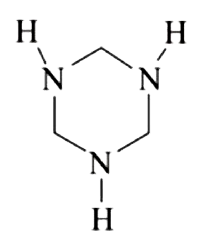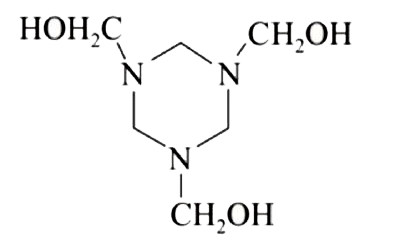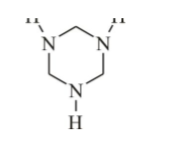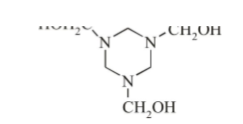When formaldehyde reacts with a NaOH it gives
brown ressinous mass
black charred mass
sodium formate and methyl alcohol
formic acid
The correct Answer is:C
To solve the question, "When formaldehyde reacts with NaOH, it gives?", we can break down the reaction step-by-step.
1. Identify the Reactants:
- The reactant is formaldehyde (HCHO) and sodium hydroxide (NaOH).
2. Understand the Reaction:
- When formaldehyde reacts with NaOH, it undergoes a reaction known as the Cannizzaro reaction. This reaction occurs in the presence of a strong base (like NaOH) and involves the disproportionation of aldehydes that do not have alpha-hydrogens.
3. Mechanism of the Reaction:
- The hydroxide ion (OH-) from NaOH attacks the carbonyl carbon of formaldehyde. This results in the formation of a tetrahedral intermediate.
- The intermediate then collapses, leading to the formation of two products: one molecule of sodium formate (HCOONa) and one molecule of methyl alcohol (CH3OH).
4. Products Formation:
- The reaction can be summarized as:
2HCHO+NaOH→HCOONa+CH3OH
- Here, sodium formate (HCOONa) is formed as a salt, and methyl alcohol (CH3OH) is formed as an alcohol.
5. Conclusion:
- Therefore, when formaldehyde reacts with NaOH, the products are sodium formate and methyl alcohol.
Final Answer:
The correct answer is C. Sodium Formate and Methyl Alcohol.
---
- The reactant is formaldehyde (HCHO) and sodium hydroxide (NaOH).
- When formaldehyde reacts with NaOH, it undergoes a reaction known as the Cannizzaro reaction. This reaction occurs in the presence of a strong base (like NaOH) and involves the disproportionation of aldehydes that do not have alpha-hydrogens.
- The hydroxide ion (OH-) from NaOH attacks the carbonyl carbon of formaldehyde. This results in the formation of a tetrahedral intermediate.
- The intermediate then collapses, leading to the formation of two products: one molecule of sodium formate (HCOONa) and one molecule of methyl alcohol (CH3OH).
- The reaction can be summarized as:
2HCHO+NaOH→HCOONa+CH3OH
- Here, sodium formate (HCOONa) is formed as a salt, and methyl alcohol (CH3OH) is formed as an alcohol.
- Therefore, when formaldehyde reacts with NaOH, the products are sodium formate and methyl alcohol.
The correct answer is C. Sodium Formate and Methyl Alcohol.
Topper's Solved these Questions
- ALDEHYDES,KETONES AND CARBOXYLIC ACIDSBOOK - MARVEL PUBLICATIONCHAPTER - ALDEHYDES,KETONES AND CARBOXYLIC ACIDSEXERCISE - CARBOXYLIC ACIDS
198 Videos
- ALCOHOL,PHENOLS AND ETHERS BOOK - MARVEL PUBLICATIONCHAPTER - ALCOHOL,PHENOLS AND ETHERS EXERCISE - Test your Grasp : Ethers
30 Videos
- BIOMOLECULESBOOK - MARVEL PUBLICATIONCHAPTER - BIOMOLECULESEXERCISE - TEST YOUR GRASP
40 Videos
Similar Questions
Knowledge Check
Formaldehyde reacts with ammonia to give :-
AH2C=NHB C
C D(CH2)6N4
D(CH2)6N4Formaldehyde reacts with ammonia to give :-
AH2C=NHB C
C D(CH2)6N4
D(CH2)6N4What is formed when formaldehyde reacts with KOH?
AEthyl alcoholBMethanolCAcetyleneDMethane
Which product will be obtained by Gridnard reaction, when Formaldehyde reacts with Ethyl magnesium lodide?
View SolutionWhich product will be obtained by Gridnard reaction, when Formaldehyde reacts with Ethyl magnesium lodide?
View SolutionBenzenaldehyde reacts with conc. NaOH to give :
View SolutionWhen formaldehyde react with ethyl amine , it gives
View SolutionFormaldehyde reacts with excess of ammonia to give
View Solution
